The Timeless Appeal of Rotis in Indian Kitchens
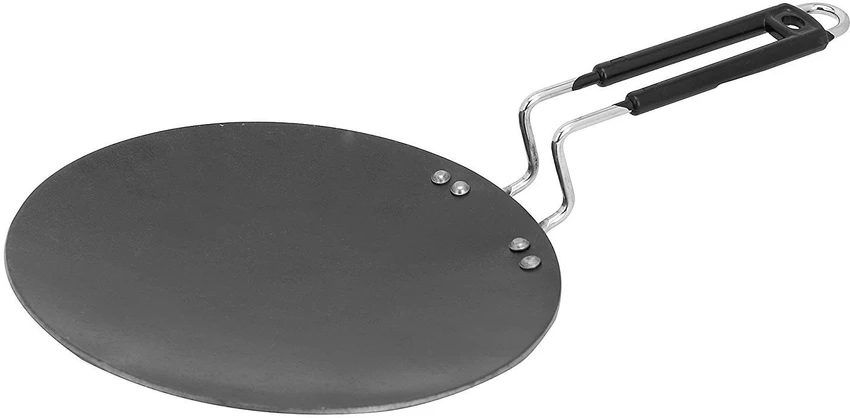
Iron Tawa For Roti have been a cornerstone of Indian meals for centuries. These round, soft, and slightly puffed breads are more than just food—they represent comfort, culture, and tradition. Whether served with dal, curry, or sabzi, a perfectly cooked roti completes the meal like nothing else.
Cultural and Culinary Significance
Rotis are not merely a dish; they are a daily ritual. From rural homes to metropolitan kitchens, making rotis is an act of love passed down through generations. It’s no surprise that tools used for making rotis, like the iron tawa, have remained staples for decades.
Roti as a Daily Staple
Thanks to its versatility, affordability, and ease of making, roti finds a place in breakfast, lunch, and dinner menus. But getting it right—soft inside and lightly crisp outside—requires more than just dough and rolling skills. It needs the right cookware, and nothing does it better than an iron tawa. traditional kitchen cookware India .
What is an Iron Tawa?
An iron tawa is a thick, flat or slightly concave cooking pan made from cast or forged iron. It’s a traditional tool found in many Indian homes, cherished for its durability and superior heat handling.
Brief History of the Iron Tawa
The iron tawa has roots in ancient Indian culinary practices. Before the invasion of non-stick cookware, households trusted iron tawas to produce evenly cooked, richly flavored flatbreads.
Traditional vs. Modern Tawa
Modern tawas may be lightweight and easier to handle, but traditional iron tawas provide a cooking quality unmatched by their synthetic-coated counterparts. Their charm lies in their simplicity and ability to improve with age.
Benefits of Cooking with Iron Tawa For Roti
Cooking on an iron tawa isn’t just about tradition—it’s a smarter, healthier choice that enhances food quality.
Even Heat Distribution
Iron retains and distributes heat evenly, ensuring that every part of the roti cooks uniformly. This prevents undercooked or burnt spots, resulting in perfectly golden brown rotis.
Natural Non-Stick Surface
With proper seasoning, an iron tawa becomes naturally non-stick over time, reducing your dependency on oil or butter—great for health-conscious cooks.
Boosts Iron Intake
One of the biggest hidden benefits is nutritional. Cooking on iron surfaces can naturally infuse a small amount of dietary iron into your food, combating iron deficiency without supplements.
How Iron Tawas Help Make Perfect Rotis
Ever wondered why rotis made by your grandmother puff up so beautifully? The secret lies in her trusty iron tawa.
Puffing & Texture
Iron tawa creates the perfect heat environment for rotis to puff up. That iconic ballooning is easier to achieve when the pan holds consistent heat.
Uniform Cooking
No more half-cooked or overdone sections. Iron tawas heat gradually and maintain a steady temperature—ideal for consistent cooking.
Authentic Flavor
The mild smoky taste and perfect texture of rotis cooked on iron tawas cannot be replicated on aluminum or non-stick pans.
Best Types of Iron Tawas for Home Cooks
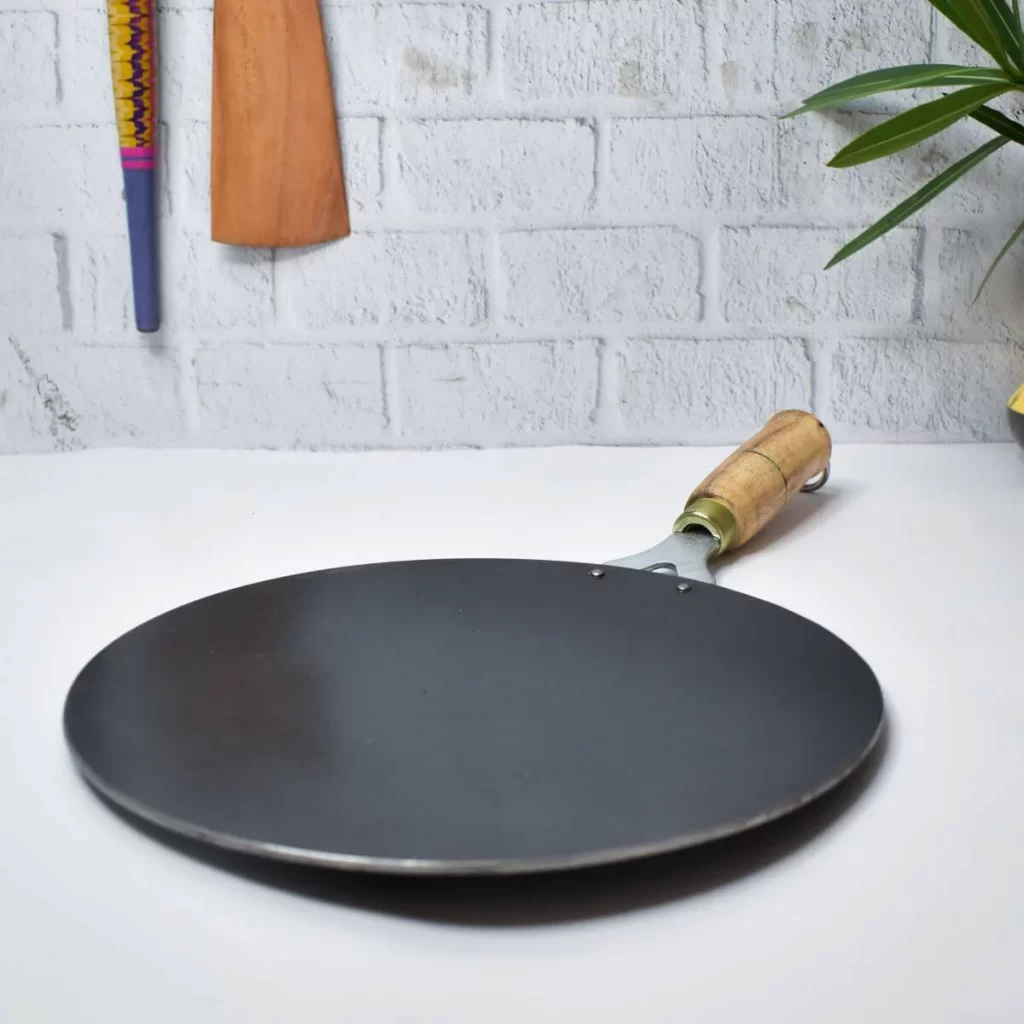
Choosing the right type depends on your cooking style and preference.
Flat Tawa
Best for roti and chapati—gives even cooking and is easy to clean.
Concave Tawa
Preferred for parathas and rotlas; helps direct heat toward the center.
Pre-seasoned vs. Raw Iron Tawas
Pre-seasoned tawas are ready to use and easier for beginners. Raw iron tawas offer more flexibility and can be seasoned to your preference.
Choosing the Right Size and Weight
The size and weight of your iron tawa can significantly affect your cooking experience.
Ideal Sizes for Different Families
- Small families (2-3 people): A 9–10-inch diameter tawa works well.
- Medium families (4-5 people): A 10.5–11.5-inch tawa ensures quicker cooking.
- Large families or batch cooking: Go for a 12–13-inch tawa for making multiple rotis efficiently.
Balancing Weight and Comfort
While a heavier tawa retains heat better, it can be difficult to maneuver. Find a balance—choose a tawa heavy enough to hold heat, but light enough for daily handling.
Seasoning an Iron Tawa the Right Way
Seasoning is the process of treating the surface with oil and heat to make it non-stick and rust-resistant.
Step-by-Step Seasoning Process
- Clean the new tawa thoroughly with hot water and mild detergent.
- Dry it completely using a kitchen towel.
- Apply oil (mustard or vegetable oil) generously on the surface.
- Heat it on medium flame for 10–15 minutes until it begins to smoke.
- Wipe and repeat 3–4 times for best results.
Do’s and Don’ts
Do:
- Season regularly for best performance.
- Use natural oils.
Don’t:
- Wash with soap after every use.
- Use a metal scrubber—opt for soft cleaning pads.
Maintenance and Cleaning Tips
An iron tawa can last generations with the right care.
Natural Cleaning Methods
- Use warm water and a soft sponge.
- Scrub with salt and a lemon half for deeper cleaning.
- Dry immediately after washing to prevent rust.
Avoiding Rust and Preserving Seasoning
- Store in a dry place.
- Apply a thin layer of oil before storing.
- Never leave it soaked in water or air-dry.
Common Mistakes While Using an Iron Tawa For Roti
Even seasoned home cooks make errors that can shorten the lifespan of their iron tawa.
Overheating
Extreme heat can damage the seasoning and warp the tawa. Stick to medium-high heat for optimal results.
Using Metal Utensils
They can scrape off the seasoned layer. Instead, use wooden or silicone spatulas.
Improper Storage
Stacking heavy pans on top or leaving them wet leads to rust and wear.
Iron Tawa For Roti Expert Tips to Make Soft, Puffy Rotis Every Time
Rotis aren’t hard to master if you follow these tried-and-tested tips.
Right Dough Consistency
Soft dough (not sticky or dry) is key. Let it rest for at least 20 minutes before rolling.
Proper Rolling and Cooking Technique
- Roll evenly—not too thin, not too thick.
- Use high heat to puff the roti after flipping the second side.
- Press gently with a cloth or spatula if needed.
Using Iron Tawa Beyond Iron Tawa For Roti
An iron tawa isn’t just for roti—it’s a versatile cookware gem.
Dosas, Parathas, and Pancakes
The even heat is perfect for crispy dosas and golden-brown parathas. Pancakes come out fluffy and evenly cooked.
Stir-fries and Roasting Spices
Toss in veggies or roast spices—the iron surface helps intensify flavor without sticking or burning.
Eco-Friendly and Budget-Friendly Benefits
Iron tawas are not only good for your health—they’re kind to your wallet and the planet.
- No chemical coatings to pollute the environment.
- Reusable and recyclable, unlike synthetic-coated cookware.
- Lasts decades with basic maintenance, saving you money long-term.
User Testimonials and Real-Life Experiences
Many home cooks and chefs swear by their iron tawas:
Where to Buy an Authentic Iron Tawa For Roti
You can purchase iron tawas both online and offline.
Online vs. Local Market
- Online (Amazon, Flipkart, etc.): Wider variety and customer reviews.
- Local stores: Let you physically inspect the weight and material.
Look for:
- Flat or concave shape
- Sturdy handles
- Even thickness
Frequently Asked Questions with Iron Tawa For Roti
1. Can I use an iron tawa on an induction cooktop?
Some modern iron tawas come with induction-compatible bases. Check product specs before buying.
2. Why does food stick to my iron tawa?
If your tawa isn’t seasoned properly or hasn’t been preheated enough, food may stick. Regular seasoning fixes this.
3. Is it safe to cook acidic foods on an iron tawa?
It’s best to avoid acidic foods like tomatoes or vinegar-based items on iron tawas to prevent a metallic taste.
4. How often should I season my iron tawa?
Initially, season it weekly. Once it’s well-used, monthly seasoning is usually enough.
5. Can rust be removed from an iron tawa?
Yes, scrub with steel wool, wash, and re-season the surface thoroughly.
6. Are iron tawas heavy to handle?
They’re heavier than non-stick pans but manageable. Some brands offer ergonomic handles for easier grip.
Conclusion: The Iron Tawa – A Must-Have Kitchen Companion
In every roti lies a story, and behind every perfect roti is an iron tawa that made it happen. With its unmatched heat distribution, natural health benefits, and time-tested durability, an iron tawa is an essential part of every home kitchen. Whether you’re making a humble chapati or an elaborate paratha, let this timeless tool help you serve perfection on a plate—every single time.
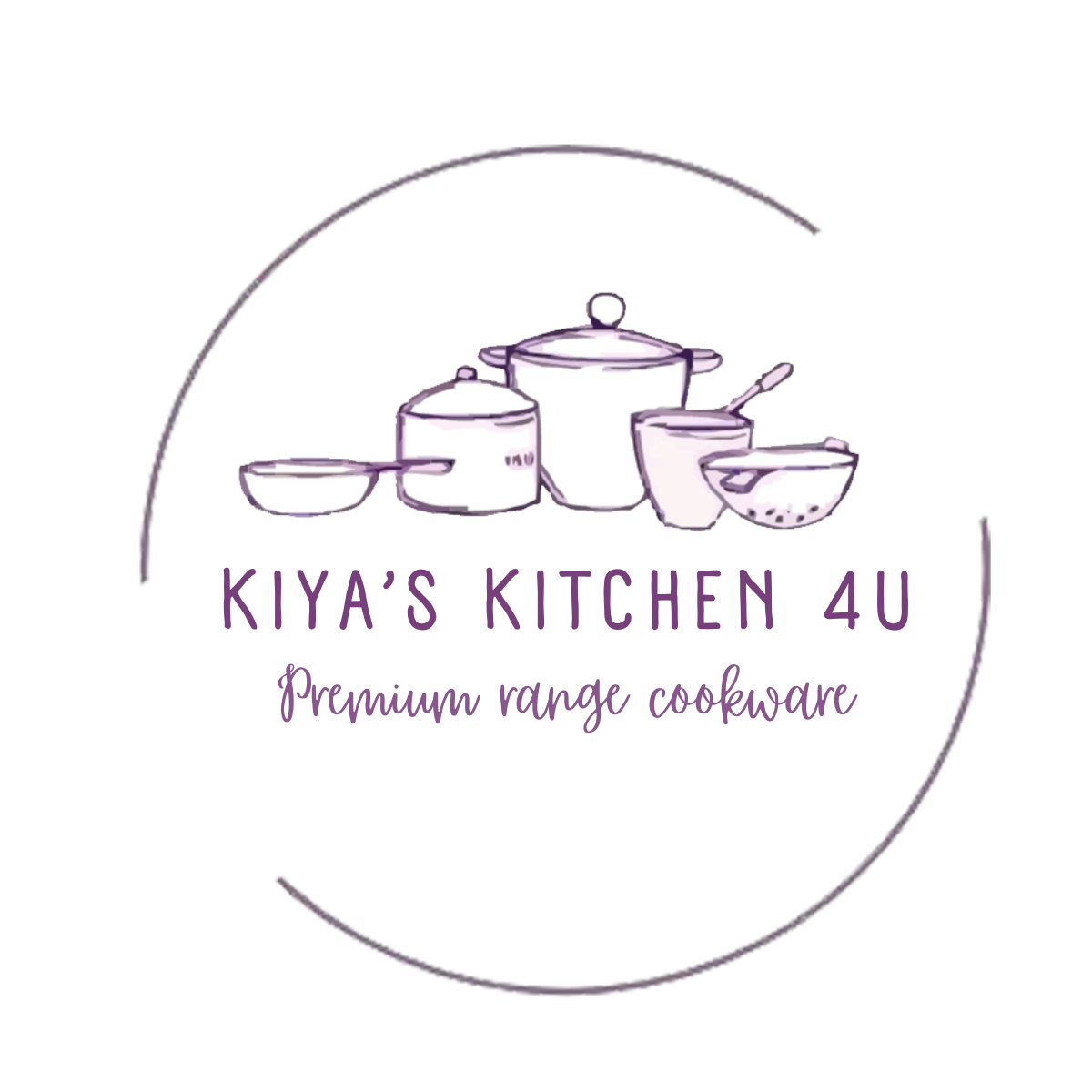

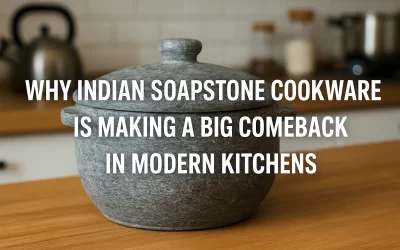
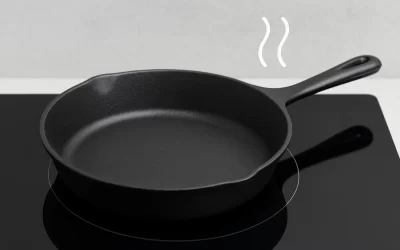
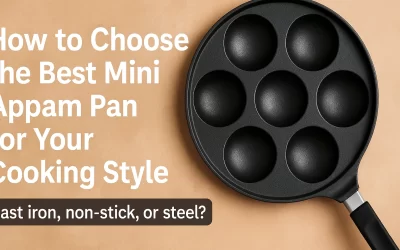
0 Comments